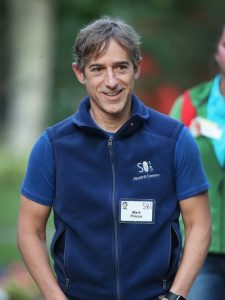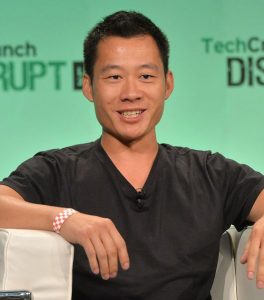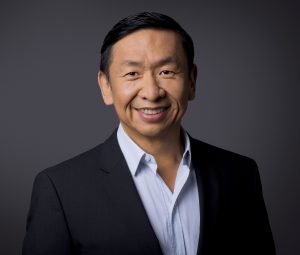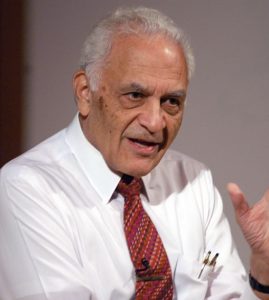Craig Newmark : American Internet Entrepreneur and the Founder of Craigslist
Great ideas are the result of curiosity, and when you have gained enough experience, it might be easier to visualise those ideas and its scope too. Craig Newmark, an American entrepreneur, who first struggled in life due to bad financial conditions, as a result of his hard work, got the opportunity to work with major tech giants of the industry. It was with those big companies he was able to understand the technology well and get to work on his own project, which later became Craigslist, a web communication company that makes the annual profits more than US$700 million.
Early Life
Craig Newmark was born on 6 December 1952, in Morristown, New Jersey, where he lived with his parents, Joyce and Lee Newmark, and his brother Jeff Newmark. His father was an insurance salesman who died when Craig was only 13.
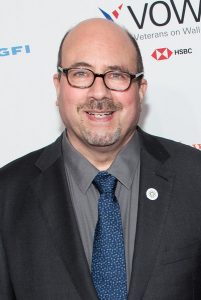
After the death of his father, the family went through major financial issues, so his mother brought him and his brother to an apartment in Jacob Ford Village. Craig joined the Morristown High School where he completed his high school education. Despite the difficulties, he was doing good at the studies and won a scholarship. He joined the Case Western Reserve University from where he completed his graduation in Science in 1975, followed by a master’s degree in the same subject in 1977.
Founding Craigslist
As soon as he completed his education, he joined IBM as a programmer and worked for a long 17 years, in the same company. In 1993, he quit his job at IBM to join Charles Schwab & Co. At the same time, the internet was a hot new topic, and the people were trying to discover more about it. They were becoming familiar with the same by helping each other.
Craig, too, came to know more about the internet in his new company and liked how people were helping each other. This incident made him think of creating a new distribution list to friends. Craig posted about the events happening around San Francisco Bay Area, that attracted the interest of the software and Internet developers, living and working around the same area. The mailing list also included feedback feature in it.
Soon, the platform became popular and started featuring job-related queries on it. People had started looking for skilled people on the very platform, and it wasn’t an event-only platform anymore. This led Craig to add more categories to the platform including alongside ‘Jobs’.
In 1996, Craig launched the official website for Craigslist with the domain name ‘craigslist.org’. In 1999, the company started functioning as a private firm. At the same time, Craig decided to leave his job in order to completely concentrate on Craigslist.
By the year 2000, Craig had employed nine people to work on Craigslist. The platform was featuring discussion forums, flagging system, self-posting process, homepage design, personals categories, and best-of-Craigslist feature. In fact, it had its own search engine. The platform started expanding, and in the same year, it was functioning in more than nine U.S. cities.
In 2004, the company started charging its users for posting in the Job category, in the New York and Los Angeles pages, but at the same time, launched a new category, ‘Gigs’ where the users could post vacancies for free. The paid job section is the main income source for the company.
The website has become more of an advertising platform and serves over 49.4 million unique monthly visitors, in the U.S. alone.
Personal Life
In December 2012, Newmark married Eileen Whelpley.
Alongside being a successful entrepreneur, Craig is also an active philanthropist. He has been donating to various non-profit organisations for many years now. In 2006, he donated $20,000 to NewAssignment and founded craigconnects in 2011, in order to support other non-profit organisations. In 2017, Newmark donated $500,000 to Wikipedia to help the platform to fight with harassment and vandalism on it. He also donated a $1 billion to Mother Jones magazine to help reduce the spread of fake news. Newmark also supports military families, voter registration efforts, and women in technology, through his private charitable foundation.
According to a report from Forbes, Newmark had a net worth of at least $1.3 billion in 2017. But Newmark said in an interview, “By monetizing Craigslist the way I did in 1999, I probably gave away already 90 per cent or more of my potential net worth.” So according to him, “no one should be a billionaire”, and he does not possess assets more than he requires according to his needs.

Yashica is a Software Engineer turned Content Writer, who loves to write on social causes and expertise in writing technical stuff. She loves to watch movies and explore new places. She believes that you need to live once before you die. So experimenting with her life and career choices, she is trying to live her life to the fullest.


